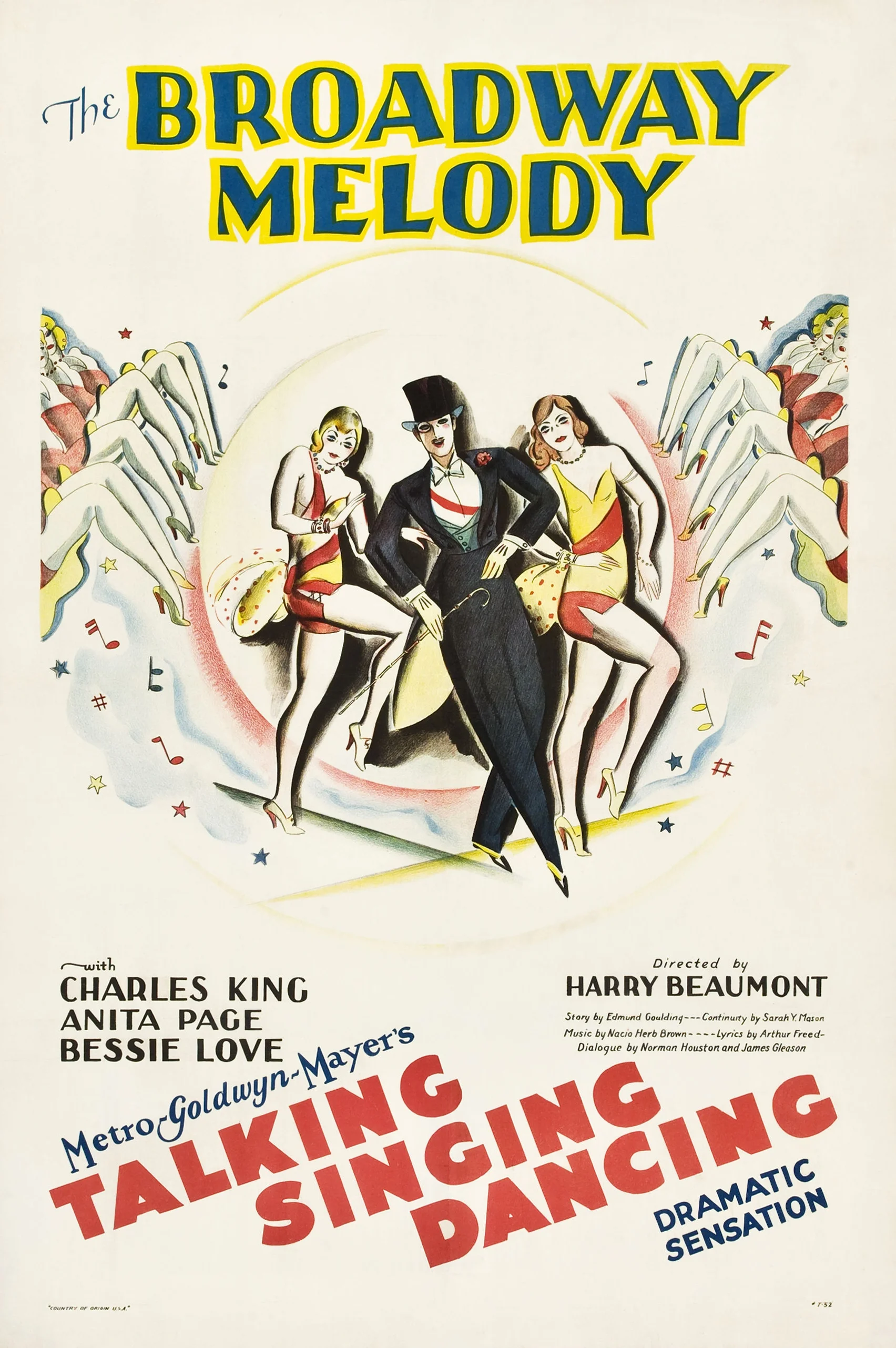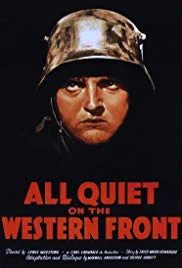The Broadway Melody (1929)
Written by James Gleason & Norman Houston
Directed by Harry Beaumont
Well...my elation about this Best Picture marathon that Wings provided has quickly deflated.
It’s tough to pinpoint how or why The Broadway Melody gets it so wrong. It’s a movie musical, which I love. It’s a downer, which I don’t mind. And, it’s from a time in Hollywood history that I find fascinating. By all accounts, I should have loved it.
I didn’t. At all. Not to say that it’s the worst movie I’ve ever seen. But if I never watch this one again...c’est la vie.
Following the story of a sister act brought to New York to audition for a Ziegfeld Follies-type of vaudeville show, The Broadway Melody shows how a love triangle (and the absolute refusal of one of the sisters to listen to even the smallest voice of reason) can temporarily drive a wedge between the two of them.
Bessie Love & Anita Page
The love triangle is unbelievable, partly because the film gives the audience almost zero reason to care about any of them. There’s very little time devoted to character development (in a film that clocks in at about an hour and 45 minutes...thanks repeated musical numbers!), so the audience just watches the three of them just...make bad choices. Eddie is a vaudeville performer, who has just written a new song, “The Broadway Melody” (which has to be one of the most boring songs about Broadway I have EVER heard), and he invites his fiancé Hank (a girl. Yes, really) and her sister, Queenie, a small-town vaudeville act, to come join him. Hank is the brains, Queenie is the beauty, so of course, only Queenie is selected for the show. She negotiates for Hank to join too (by allowing the Producer to split the wage of one performer between the two of them, which...what?), and ultimately Hank gets cut from number after number, while Queenie becomes a bit of a chorus girl star after she replaces a girl who falls off a ship set on the stage (no, really. The girl falls off and the only response is to find another girl. They make zero attempt to fix the danger; that girl is probably the 4th girl to fall off, and is probably internally bleeding from a broken leg, but good luck getting anyone to care about it. The show must go on, apparently).
Do you, the reader, notice how much of the previous paragraph is devoted to character development, and how much is plot? That’s the issue with the film...it’s a lot of plot jammed in, and nothing is really happening...and by that point in the plot, we’re not even halfway. Suffice it to say, everyone just keeps making terrible choices: Eddie (remember, he’s engaged to Hank) falls instantly in love with Queenie when he sees her (which, hasn’t he met her before? HE’S ENGAGED TO HER SISTER). Queenie gets courted by a rich jerk, or so we’re told: in a “show, don’t tell” medium, we don’t see any sign that he’s rich (other than him wearing a tuxedo, but so is everyone else at the theater BECAUSE IT’S 1929), or that he’s a jerk, until about 15 minutes from the end of the film...which is a great place to finally show that. Hank and Eddie know that he’s using her (how they know this, I’m not sure. I could maybe buy that Eddie knows him, but Hank and Queenie just got there like...two weeks ago). They plead with her not to see him, but of course, the terrible decisions abound and Queenie gotta do what Queenie gotta do and I’m just over here face-palming because the entire middle of the film is just SCENE AFTER SCENE OF THIS.
There is, admittedly, one great character development scene, as the film heads into its third act: after Queenie runs off to Rich Jerk (AGAIN), Hank realizes that Eddie is in love with Queenie, not her. She tells him to go fight for her, and after he leaves, she tries to remove her makeup, but swings back and forth between hysterical laughter and sobs. It was a fairly touching moment, and it is probably the reason Bessie Love secured a nomination for Best Actress (she lost to Mary Pickford).
Moving on from the plot, there’s many other issues that plague the film, although a few of them aren’t necessarily the filmmakers’ fault. I noted in my review for Wings that I loved how mobile the camera was. Unfortunately, with the advent of sound pictures, the mechanisms required forced the camera to return to a locked down position; I don’t recall a single camera move throughout the entire movie. In the dialogue scenes, characters are often found grouped together, and it becomes easy to tell where the single microphone is located, because characters don’t seem to speak unless positioned in a specific location. All of this causes a boring, static visual template, which can’t be avoided just yet, but still worth noting.
Additionally, while there is not a lot of interesting camera work, there IS a lot of musical numbers! What there isn’t are any GOOD musical numbers. The title song, as I mentioned, is mind-numbingly boring, and so are all the other ones. That, coupled with the locked-down nature of the camera, gives the production numbers a detached feel. Indeed, in one of the biggest numbers, there’s a tap break. Guess what the camera doesn’t show? THEIR FEET. I just...why??
The reason for all the musical numbers, or for making this movie musical in the first place, is, in my opinion, a simple case of supply and demand. “Talkies” exploded in popularity, so one can see how easy of a decision it is to simply give the audience what they want. The plot, the characters, the design...all of that can go by the wayside, because the audience wants sound and they are going to get it. Another reason is probably due to the need for actors who were used to being heard. There were many great silent film stars, who, when sound films emerged, found their contracts drying up, usually due to their voices not matching their established personas (Rudolf Valentino and Pola Negri are just two examples who come to mind here). Broadway became (and still is, in a way) a great pool to cull talent for Hollywood, and therefore a movie musical just makes sense for them.
Just ONE example of Queenie being handled
One final note before I wrap this up: there were actually a few moments that don’t hold up in a bigger, social awareness type of way. There is a highly effeminate costume designer who is ridiculed constantly (one person even describes him as “lavender”, a much more common derogatory phrase for homosexual back then); also, the character of Queenie is literally manhandled by, well, nearly everyone. Rich Jerk finally shows what a rich jerk he is by essentially beginning to rape her after buying her expensive things (Eddie interrupts, luckily), but thankfully she gets the final word by throwing all the gifts right back at him and storming out. It’s a surprising moment in such an early film in history, but it doesn’t make up for all the other times Queenie just lets herself get grabbed, thrown, or restrained.
Overall, I suppose that, as bad as I found this film to be, I do owe it a debt of thanks. It is the first big talking movie musical, so it helped start the form that has grown and evolved over the last 90 years. There’s a few others on this Best Picture list, and I’m looking forward to comparing them to this one.
FINAL GRADE: D+




